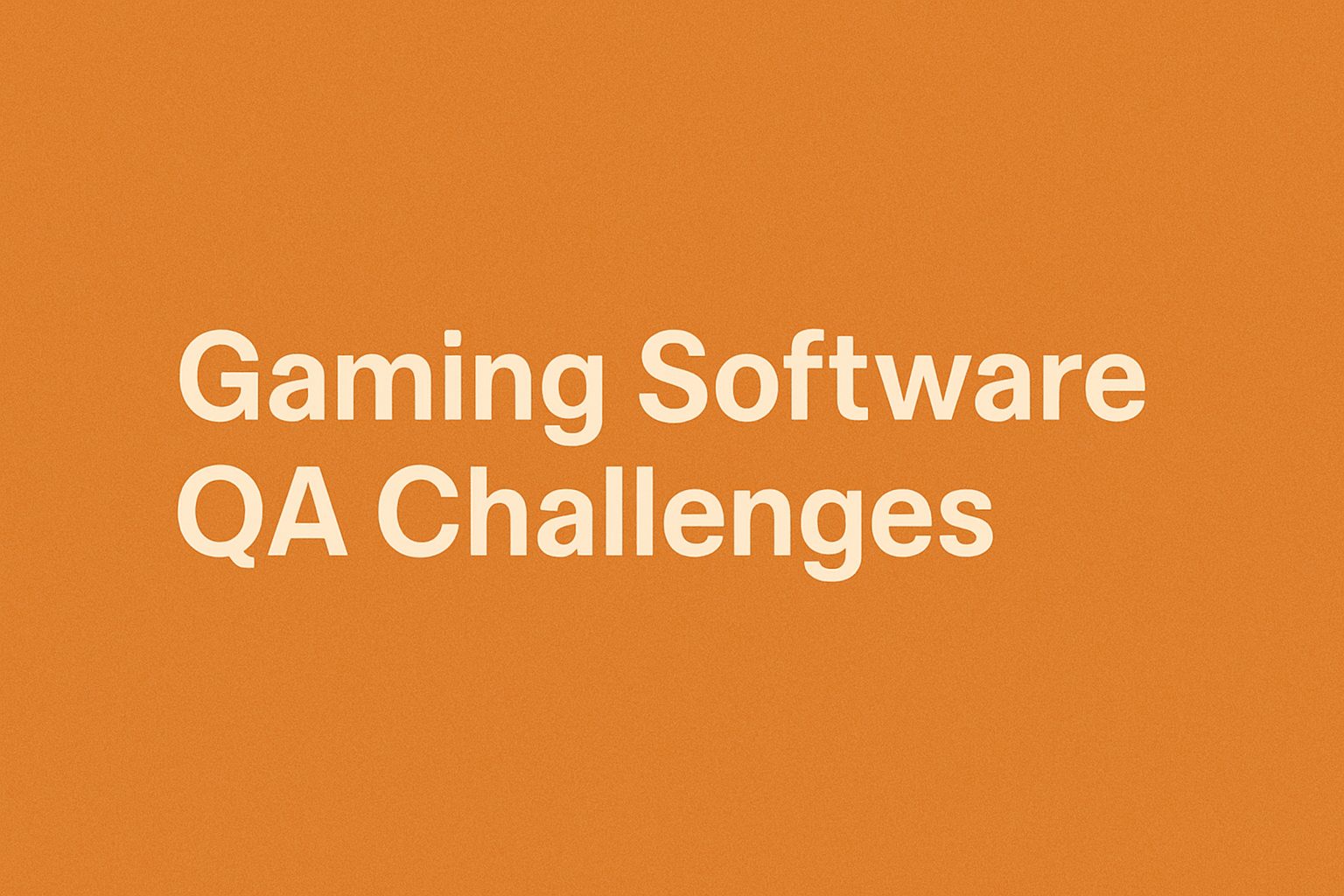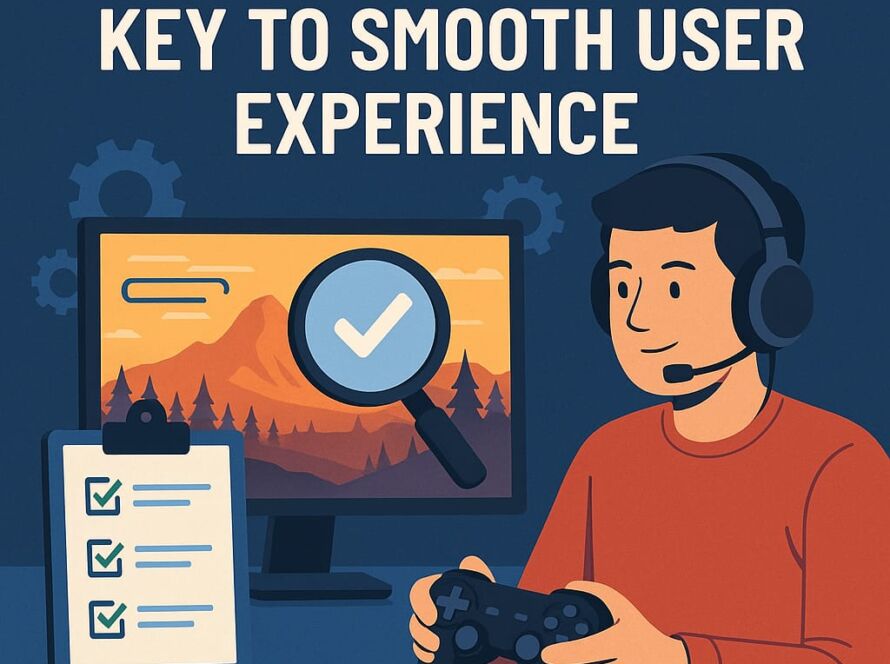In the fast-paced gaming industry, delivering smooth, reliable, and immersive experiences is the key to success. However, behind every polished game lies an intense quality assurance (QA) process that tests every detail. For developers and QA teams alike, navigating the most critical Gaming Software QA Challenges is essential to avoid user churn, negative reviews, and technical failures. This article explores the top 7 challenges faced during QA and practical strategies to overcome them.
Device and Platform Fragmentation: A Core Gaming Software QA Challenge
One of the most common and complex Gaming Software QA Challenges is device and platform fragmentation. Modern games need to run seamlessly on multiple platforms like Android, iOS, PC, Xbox, and PlayStation. Within each platform, variations in hardware specifications, screen sizes, resolutions, and operating system versions add another layer of complexity.
A game that runs flawlessly on a high-end iPhone might crash on an older Android device. Ensuring a consistent gameplay experience across such a diverse ecosystem demands strategic planning.
Solution:
Adopt device farms and cloud-based testing environments to simulate different device conditions. Use a mix of real-device testing and emulators. Implement responsive design and dynamic asset scaling to adjust visuals and controls based on the device profile.
Tackling Performance and Load Issues in Gaming QA
Performance problems such as low frame rates, lag during gameplay, and crashes under heavy load severely affect the gaming experience. These are among the most frequent Gaming Software QA Challenges developers encounter.
Games with rich graphics or real-time multiplayer modes often face spikes in memory consumption or CPU usage. If a game performs poorly even for a fraction of users, negative feedback and uninstalls are guaranteed.
Solution:
Integrate performance testing early in the development cycle. Tools like GameBench, Unity Profiler, and Apache JMeter help identify memory leaks, CPU bottlenecks, and latency issues. Also, conduct load testing with simulated concurrent users to replicate peak traffic scenarios and fix issues before launch.
Multiplayer Sync and Network Instability: A Real-Time QA Hurdle
Multiplayer games bring their own set of QA complexities. One of the most disruptive Gaming Software QA Challenges in this space is synchronization. Even a few milliseconds of delay or packet loss can break real-time gameplay.
Issues like delayed player movement, teleporting characters, or mismatch in leaderboard data reflect poorly on game stability.
Solution:
Design robust synchronization protocols with fallback mechanisms. Use network throttling during testing to simulate real-world conditions such as low bandwidth and high latency. Validate game logic in both client and server states to ensure consistency.
Inconsistent Game Physics and Mechanics Break Immersion
Physics-based games or those with custom mechanics (such as shooting, driving, or jumping) must behave predictably. Inconsistencies in these mechanics are subtle but damaging. Among Gaming Software QA Challenges, logic bugs in gameplay mechanics often go unnoticed until post-release.
Players may exploit flaws in collision detection, hitboxes, or gravity, which not only ruins immersion but opens avenues for unfair advantage.
Solution:
Create detailed test cases covering all core gameplay scenarios. Record play sessions and analyze frame-by-frame to identify minor glitches. Implement automation tools that simulate repeated actions to expose bugs under variable conditions.
Game Security: One of the Most Critical Gaming Software QA Challenges
Security vulnerabilities in games can lead to cheating, hacking, or data theft. Common issues include weak authentication, unencrypted transactions, or poorly protected APIs. These vulnerabilities impact both gameplay balance and user trust.
For example, if players can manipulate in-app purchases or unlock premium features illegally, it not only affects monetization but also the game’s integrity.
Solution:
Conduct penetration testing as part of the QA cycle. Encrypt all data transmissions using SSL/TLS protocols. Implement anti-cheat mechanisms and regularly update them to counter emerging threats. Review third-party SDKs and plugins for known vulnerabilities.
Frequent Releases and Continuous Updates Pose QA Pressure
Gaming companies today follow agile models with regular patches, seasonal content updates, and bug fixes. But with every update comes the risk of introducing new bugs, especially if regression testing is incomplete. This challenge directly impacts time-to-market and user retention.
Solution:
Adopt Continuous Integration/Continuous Deployment (CI/CD) pipelines with automated testing at every stage. Maintain an updated suite of regression test cases that run with each build. Use tools like Jenkins, GitLab CI, and Appium to streamline the release process.
Limited Test Coverage Hampers Quality
Due to time, budget, or resource constraints, QA teams may overlook less common use cases or edge scenarios. While basic gameplay gets tested thoroughly, edge cases like rare achievements, third-party controller compatibility, or unusual input combinations might slip through. Among the underestimated Gaming Software QA Challenges, limited coverage can lead to unexpected crashes or user frustration.
Solution:
Use risk-based testing to prioritize high-impact areas. Include crowdtesting platforms to expand test coverage across geographies, devices, and user behaviors. Analyze player analytics to identify real-world usage patterns and test accordingly.
Wrapping Up: Solving Gaming Software QA Challenges with Strategy
As the gaming market becomes more competitive, quality becomes the defining factor of success. Addressing these Gaming Software QA Challenges with structured strategies, the right tools, and continuous feedback loops ensures smoother gameplay, better ratings, and longer user retention.
If you’re diving deeper into game development or launching a multiplayer title, make sure your QA pipeline is built to handle complexity. For more on QA strategy and implementation in gaming, you can also read our guide on How QA Enhances Player Experience in Online Gaming.



